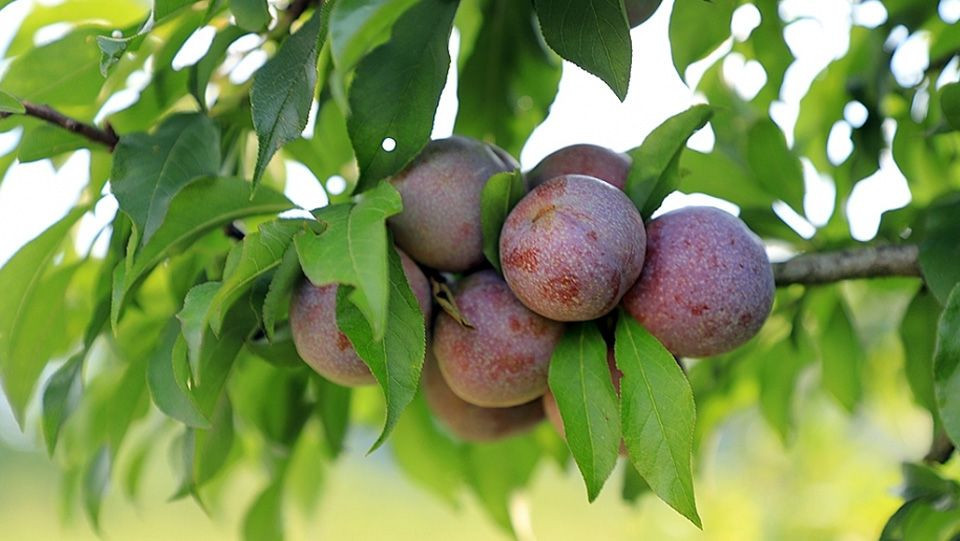
Farmers in Son La province who grew this kind of plum had their income grow by fivefold in the first year. In the second year, the price for Ruby plum hit a record high of 150,000-250,000 per kilo, becoming an expensive fruit in Vietnam.
This case shows the effectiveness of brand positioning for Vietnamese agricultural products. However, the number of branded agricultural products is modest right now.
Vietnam is known as a major exporter of agricultural products. Its export turnover from agricultural products increases steadily year by year and sets historical records.
In 2012, the country’s export revenue of agricultural products reached 27.54 billion USD, but the figure jumped to 30.87 billion USD in 2014 and 40 billion USD in 2018, bringing Vietnam into the top 15 leading agricultural exporting countries in the world.
In 2021, despite the outbreak of Covid-19 that disrupted global supply chains, Vietnam still earned 48.6 billion USD from agricultural products.
This year, the pandemic has not ended, inflation has spread globally, and the conflict between Russia and Ukraine has significantly affected Vietnam’s economy. However, the Vietnamese Ministry of Agriculture and Rural Development is confident that export turnover of agricultural products will reach 55 billion USD, twice as much as that of 2012 and far beyond the target assigned by the Government to the agricultural sector.
Agriculture is still one of the pillars of Vietnam's economy. However, the country only exports raw or preliminarily processed agricultural products, so the quantity of exported goods is high but the prices and export revenue are low.
For example, Vietnam is the 5th largest tea producer and exporter in the world. In Taiwan, Vietnamese tea accounted 56% of the total imported tea amount in 2021. However, for the same type of green tea exported to Taiwan, Japan and Sri Lanka earned 10,173 USD and 6,323 USD per ton, while Vietnam got only 1,721 USD/ton. That is, the price of Japanese and Sri Lanka green tea is 5.9 and 3.67 times higher than that of Vietnam.
In the US, this market spent up to 4.68 billion USD importing coffee in the first half of 2022, with the average import price of 5,615 USD/ton. Vietnam is one of the three largest coffee suppliers to the US, with the lowest average price of 2,367 USD/ton, compared to 4,124 USD of Brazilian coffee, 6,115 USD for Colombian coffee, 6,000 USD and 5,671 USD for Guatemala and Honduras, respectively, and 7,333 USD from other markets.
Experts say that a nation with many businesses owning strong brands has an important foundation for raising the nation's brand. When the national brand is elevated in the international market, it will create a guarantee of product reputation and quality, thereby improving the competitiveness of enterprises in export activities.
In 2019, Vietnam’s ST25 rice won the title “the world's best rice” at the World Rice Conference in the Philippines. This rice recently passed more than 600 technical standards to penetrate the Japanese market. Vietnamese rice has also entered 4,000 supermarkets in France.
Currently, Vietnam is famous for agricultural products like rice, coffee, wood products, seafood, pepper, cashew nuts, vegetables, rubber, etc. Vietnamese agricultural products are also present in 180 countries and territories. Unfortunately, most of the exported products are unbranded, or some are exported under the brand name of other countries.
Urgent task
Vietnam's export turnover is increasing; brand building is now more important. It is necessary to build a complete brand strategy.
In a recent report to the National Assembly, the Ministry of Agriculture and Rural Development said it had compiled and implemented brand building projects for each individual product line.
For example, under the national rice brand of Vietnam, the trademark GẠO VIỆT NAM/VIETNAM RICE is protected in 21 countries and territories.
The Ministry is also working on the national brand for Vietnam's main export seafood products, including Vietnamese shrimp, tra fish and tuna. In addition, it is also building a high-quality Vietnamese coffee brand, Vietnam wood brand and others.
Mr. Le Van Nghi, Vice Chairman of Vietnam Cooperative Alliance, said that it is now the era of brands. If there is a brand, the value of agricultural products can increase by 10-20 times.
Ms. Nguyen Ngoc Huyen, CEO of Mia Group, the owner of Ruby plum brand, said building a brand will help increase value, creating trust for consumers. From there, it is possible to position the brand in the international market, helping to change the perception of consumers about Vietnamese agricultural products.
But to build a brand, it is a must to go back to the production process. Farmers need to cooperate with businesses to standardize farming techniques, and with authorities to do well in traceability and geographical indications, and have large agricultural areas with uniform quality. Vietnam should learn from the Japanese about this, she said.
This must be done on a national scale. To create sustainable value, agricultural brands need to be associated with geographical indications bearing national and local images, thereby creating differentiation and enhancing the brand value of products.
Tam An